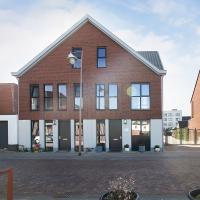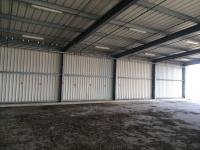Floating eco-homes: building on the water instead of fighting it New sustainable systems to withstand floods come from the Netherlands ime ago we talked about a very efficient way to survive natural disasters: do you remember monolithic domes? We explained how these easy-to-build energy- e ...
Floating eco-homes: building on the water instead of fighting it
Floating eco-homes: building on the water instead of fighting it
New sustainable systems to withstand floods come from the Netherlands ime ago we talked about a very efficient way to survive natural disasters: do you remember monolithic domes? We explained how these easy-to-build energy- efficient round-shaped homes can resist the ravages of extreme natural events. Architects and builders are always at work to find new ways to face extreme weather conditions connected to climate changes.
Today, we will focus on pioneering constructions designed for low-lying countries that are most at risk from rising sea levels: floating eco-homes should protect low-lying towns and villages from the risk of floods. This task has been usually given to dikes, but often they are not enough, as floods have often forced people to leave their homes despite the presence of artificial structures to regulate water levels.
The climate change is causing more frequent and more severe floods; furthermore, Dutch scientists expect sea level to rise up to 110 cm (43 inches) by 2100. At the same time, the pressure on land will increase and in the next two decades 500 thousand new homes will be needed, the Dutch government says; therefore, Dutch house builders have no alternative but to find new building solutions.
If you want to have an idea of what amphibious houses are, you need to go to Maasbommel, a town in the Dutch province of Gelderland, in the Netherlands, where one third of the country lies below sea level. The waterfront of the town is lined with blue-yellow-and-green-panelled floating houses. The buoyancy is given by a hollow concrete cube put at the base of each house, while a vertical pile keeps the house anchored to the land. Steel pillars keep the flood-adaptive buildings horizontally stable in case of flood. Flexible pipes pump in the necessary electricity and water. These houses are planned to be strong enough to resist a 4-m water rise and with the aim of being sustainable buildings. If the waters rise, the houses rise too, keeping inhabitants dry.
They are not cheap – prices start from 260,000 euros – but the demand is high according to the company that develops them (Dura Vermeer). Buyers claim it is a good investment despite the maintenance they require. They have also attracted international attention from countries sharing the same problems and worries. Officials from New Orleans – that was struck by a severe flooding in 2005 – have visited Maasbommel to see how this ground-breaking system works.
Although the designers of floating houses have found a good solution for low-lying areas, they have not been the only one to look for another effective sustainable way to withstand floods. A group formed by Frits Schoute and some engineering and architecture students are implementing a pilot project called “Ecoboot” to build whole cities at sea and to cope with the problem of the coming shortages of land.

Conventional flood defences like dikes cannot be completely replaced by these innovative solutions, but experts say they will not be enough in the future and alternatives to improve the security of mankind must soon be found.
Read also:
· Living in a monolithic dome helps you survive natural disasters
· Bioclimatic-architecture creates an ideal setting for living
Related Insights
-
Floating eco-homes: building on the water instead of fighting it
Real Estate Listings
For sale Trullo, Netherlands, Noord-Holland, Muiden, Rietpolderlaan

For sale
Trullo
139 m²
For sale House, Netherlands, Zuid-Holland, overflakke, straart1

For sale
House
242 m²
For sale Villa, Netherlands, Noord-Holland, Hoofddorp, Allegondahoeve 8

For sale
Villa
951 m²
For sale Terraced House, Netherlands, Noord-Holland, De Kwakel, Rozenlaan 71

For sale
Terraced House
130 m²
For sale Building, Netherlands, Amsterdam, Amsterdam, MARGA KLOMPELAAN 76, 1067 VA AMSTERDAM

For sale
Building
120 m²
For sale 2 Bedrooms, Netherlands, Amsterdam, Amsterdam, Ijburg

For sale
2 Bedrooms
90 m²
For sale Business, Netherlands, Limburg, horst, hamweg 3

For sale
Business
1000 m²
For sale Office, Netherlands, Amsterdam, Amsterdam, no 9 olayinka

For sale
Office
34 m²
For sale Development Property, Netherlands, Noord-Brabant, Lierop, De Wertstraat

For sale
Development Property
8665 m²
For sale Development Property, Netherlands, Noord-Brabant, Someren, Geldestraat 11

For sale
Development Property
1928 m²

 Free real estate ads
Free real estate ads